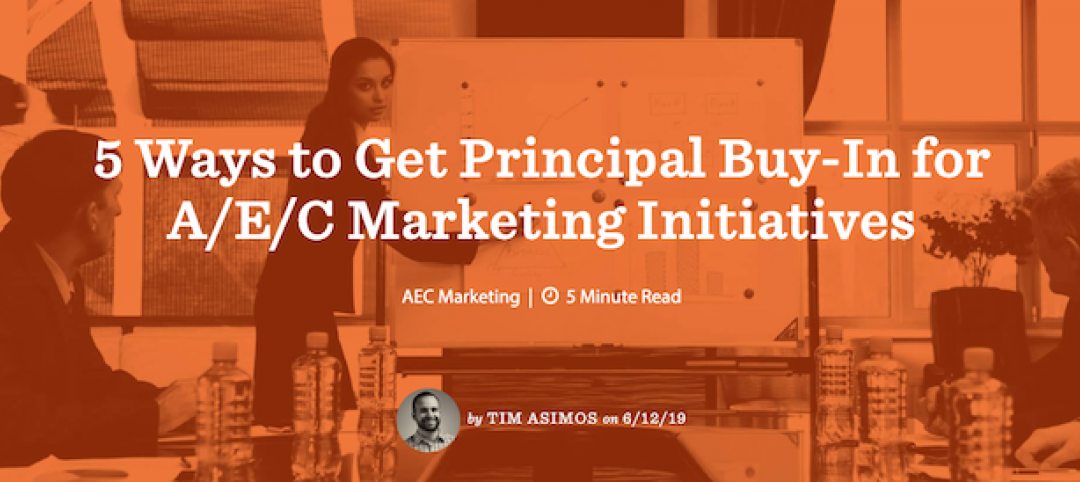While there are a myriad of organizational, economic, environmental, and technical challenges that AEC firms face in today’s highly competitive marketplace, none have proven to be as formidable and persistent as gaining (and sustaining) true competitive advantage.
One of the primary obstacles to competitive advantage is differentiation—standing out from a crowded marketplace of similarly qualified firms, who boast similar expertise, people, and experience. There are a lot of ways marketing can help, including developing a strategic marketing plan, investing in a solid, unique brand platform, building a powerful website, and promoting thought leadership through content marketing. But as powerful (and necessary!) as these things are, they’re only part of the differentiation equation.
Most (if not all) of what many AEC firms tout as differentiators have become table stakes for today’s buyers. Things such as “on-time and on-budget,” “innovative solutions,” and “forward thinking” are simply what clients have come to expect from every firm in the industry. And the industry’s focus on people, service offerings, and market expertise as points of differentiation are at best short-lived, as any one of a firm’s competitors can easily hire away a key expert, purchase a new piece of software, or add another specialty to their list of services and markets. Sustained competitive advantage exists only when it can’t be easily and quickly imitated by the competition.
When there exists no real or perceived differentiation between one firm and the next, commoditization—where AEC firms find themselves competing almost entirely on price—is sure to take root. Commoditization leads to thin margins and lost deals, as clients are unable to perceive the added value of a higher price point. Both of these obstacles have historically proven to be challenging for firms everywhere in the built environment.
Another factor worth considering is that clients and their expectations for what an AEC partner should provide them is rapidly expanding outside of services, plans, and the traditional deliverable. Today’s buyers are looking for solutions to their business problems from collaborative advisors. They’ve come to expect a higher level of service and detail than what was provided in the past. In some ways, this is a reflection of the radical shifts in consumer behavior and expectations for today’s B2C brands. Don’t forget that while your firm may exist in a business-to-business industry, you work with people—who have grown accustomed to the personalization, customer obsession, and brand experiences they encounter on a daily basis with companies like Amazon and Netflix.
Client experience as competitive advantage
So how do firms tackle these growing concerns and challenges? Client experience (CX) is emerging as an antidote for these and other persistent competitive challenges for AEC firms of all shapes and sizes. According to research from Walker, by the year 2020 client experience will overtake price and product as the key brand differentiator for business-to-business clients. In other words, while budgets and price will always play a role, buyers are increasingly looking for their AEC partners to provide them with an exceptional experience, from all phases of the relationship.
Brian Solis, Principal Analyst with Altimeter Group, put it this way: “Customer experience is the new marketing. Customer experiences are the new brand.” In other words, it’s no longer what a firm says about themselves that matters to clients, but rather it’s what others say and what clients experience that carries weight. Marketing and branding should reinforce what your clients experience when they work with your firm. Which means that tomorrow’s firms will compete more on the experiences they deliver, than the services they provide.
So if CX is going to be the future, many firm leaders and marketing professionals want to know just exactly what does CX involve? Gartner describes CX as “the practice of designing for and reacting to client interactions to meet and exceed expectations to increase client satisfaction, loyalty, and advocacy.” Simply put, it’s becoming advocates for your clients, in order to turn clients into advocates for you. And it’s looking holistically at the end-to-end client lifecycle—from prospect to client and client to advocate—with the goal of providing exceptional, personalized, value-adding, differentiated experiences at every touch point along the way.
In its most basic description, your firm’s brand is a promise made to prospects and clients. And that promise—however modest or audacious it may be—is realized (or not) through the experience you serve up to your clients. No amount of marketing and communication, regardless of how clever or creative, can change the realities of what clients actually experience. Which is why it’s so critical for your brand promise and your client experience to be fully aligned.
Turning existing clients into client advocates
While repeat business is vastly important to a firm’s bottom line, existing clients also represent an opportunity to gain new business. Research from LinkedIn found that 84% of business-to-business decision makers start the buying process with a referral. To further make the case, Net Promoter research from Bain & Company and Satmetrix has shown that new clients acquired from the recommendation of existing client advocates are also more profitable than clients acquired through traditional marketing efforts. This underscores the reality that AEC marketers can add more value to their firms by also focusing on turning clients into advocates, in addition to new business pursuits.
Forward-thinking firms are realizing that providing an unrivaled, exceptional client experience across the entire client life cycle is the answer to creating genuine differentiation and sustained competitive advantage, while avoiding commoditization. By focusing on the client’s needs and building a strategy and culture that seeks to consistently elevate the client experience, firms can distinguish themselves from everyone else.
More from Author
circle S studio Blog | Jul 22, 2019
5 ways to get principal buy-in for AEC marketing initiatives
Gaining leadership buy-in for marketing initiatives can be an incredibly challenging task for many A/E/C marketers.
circle S studio Blog | Jul 17, 2019
12 key features your AEC website could be lacking
Today’s A/E/C firms can no longer rely on the brochure-style websites of the past.
circle S studio Blog | Jan 29, 2018
14 marketing resolutions AEC firms should make in 2018
As we close out the first month of the New Year, AEC firms have made (and are still making) plans for where and how to spend their marketing time and budgets in 2018.









